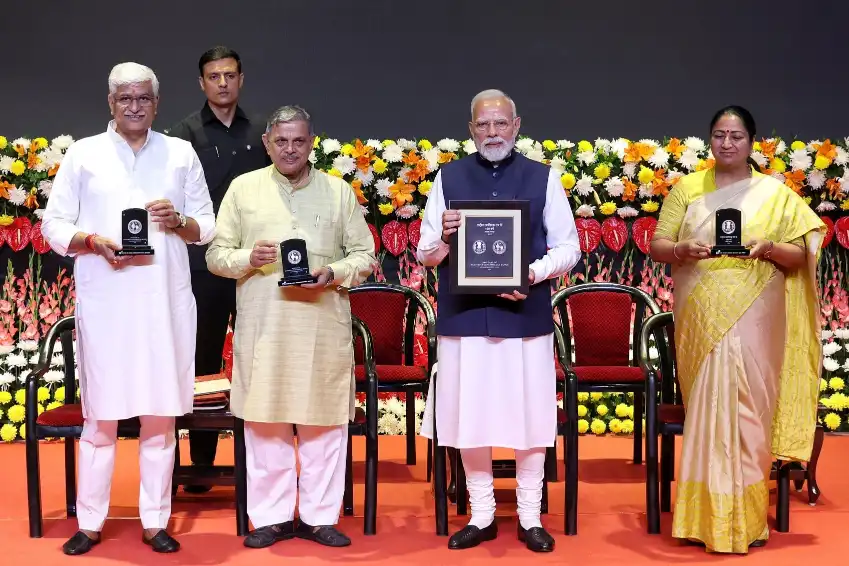On October 1, 2025, Prime Minister Narendra Modi marked the centenary of the Rashtriya Swayamsevak Sangh (RSS) at the Ambedkar International Centre in New Delhi. He released a specially designed commemorative ₹100 coin and postage stamp celebrating the Sangh’s contributions to the nation. Calling the RSS the embodiment of “timeless national consciousness,” Modi emphasized the organization’s crucial role in India’s journey toward becoming a developed nation by 2047.

Design of the Coin and Stamp
The ₹100 coin features the national emblem on one side and an image of Bharat Mata in Varad Mudra, accompanied by a lion and saluting swayamsevaks, on the other. Modi highlighted that this could be the first instance of Bharat Mata appearing on Indian currency. The coin also carries the RSS’s guiding motto: “Rashtraya Swaha, Idam Rashtraya, Idam Na Mama.”
Founding and Legacy of RSS
Modi recalled that the RSS was founded 100 years ago on Vijayadashami, describing it as a modern manifestation of India’s ancient national consciousness rather than an entirely new creation. He lauded the founder, Dr. Keshav Baliram Hedgewar, and early swayamsevaks for their participation in the freedom struggle, often facing imprisonment.
Commitment to Society and Nation-Building
The Prime Minister spoke about the Sangh’s resilience in the face of conspiracies and challenges, including false allegations against the second Sarsanghchalak, Madhav Sadashivrao Golwalkar. He noted that swayamsevaks view themselves as inseparable from society, maintaining faith in constitutional institutions and remaining sensitive to societal needs, even during crises.
From helping refugees after Partition to responding in national emergencies, swayamsevaks have consistently been on the frontline. Modi emphasized the RSS’s philosophy of “Vyakti nirmaan se rashtra nirmaan,” or nation-building through character-building, which begins at the daily shakha, where individuals transition from “Me to We.”
RSS’s Broad Outreach
Modi compared the Sangh’s work to a river nourishing the land it passes through. He highlighted the activities of its affiliates across education, agriculture, social welfare, tribal upliftment, women’s empowerment, arts, sciences, and labor, all united by the principle of “Nation First.”
Organizations like Vanvasi Kalyan Ashram, Sewa Bharti, Vidya Bharti, and Ekal Vidyalayas serve remote regions, preserving local traditions while fighting social evils such as caste discrimination and untouchability. The RSS has also advocated for social unity through initiatives like “one well, one temple, one cremation ground.”
Preparing for Modern Challenges
Addressing India’s future challenges, Modi noted issues such as foreign dependence, attempts to divide national unity, and demographic changes through infiltration. He acknowledged the RSS’s “Panch Parivartan” framework, which provides swayamsevaks with a roadmap for nation-building through self-awareness, social harmony, cultural and civic values, and environmental protection.
Modi concluded by wishing swayamsevaks well as the organization enters its next century, underlining the Sangh’s ongoing role in India’s development journey.
Centenary Celebrations
The RSS centenary coincides with Vijayadashami on October 2, alongside Gandhi Jayanti. RSS chief Mohan Bhagwat delivered the keynote address, with former President Ram Nath Kovind as the chief guest.
